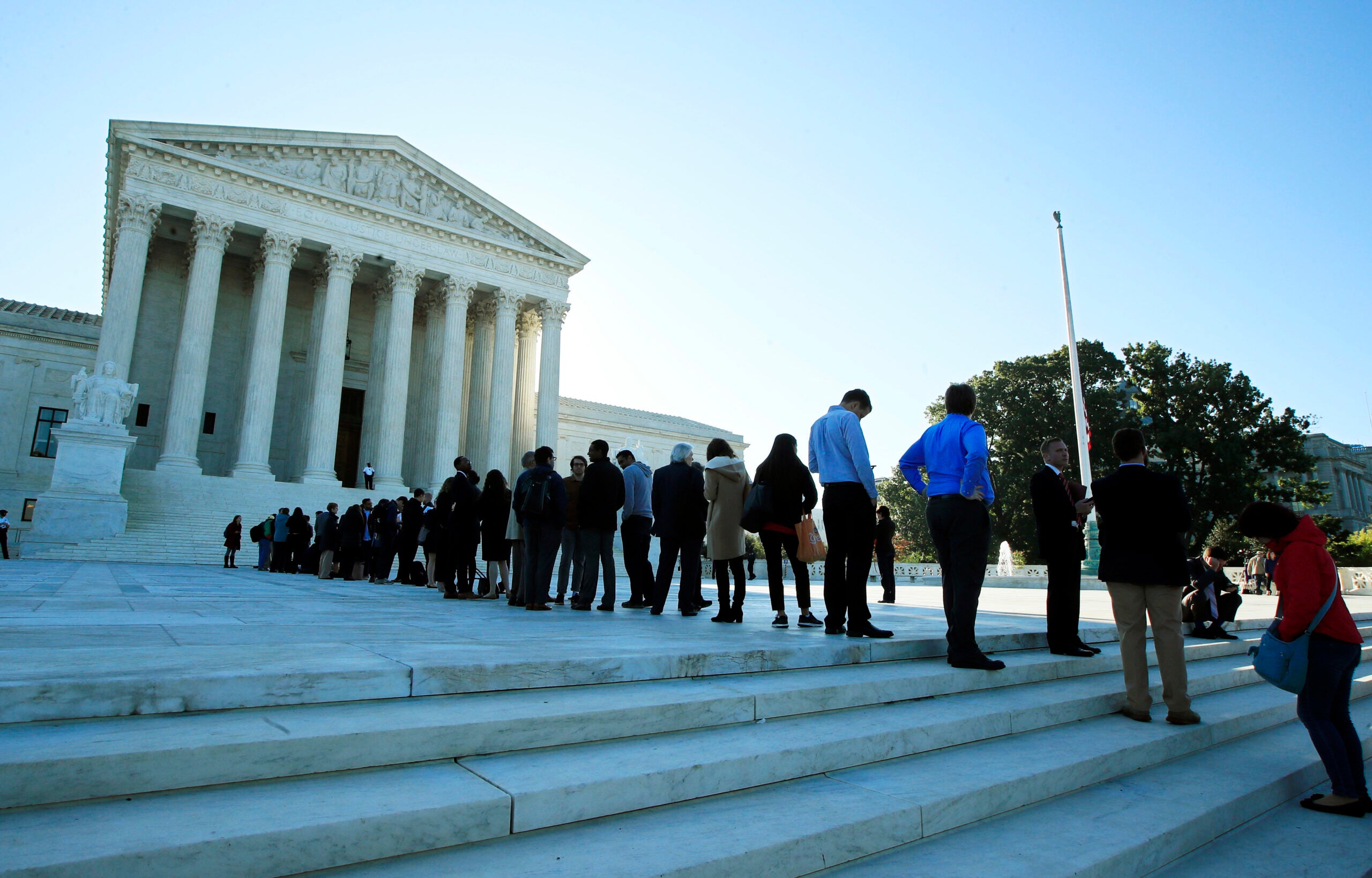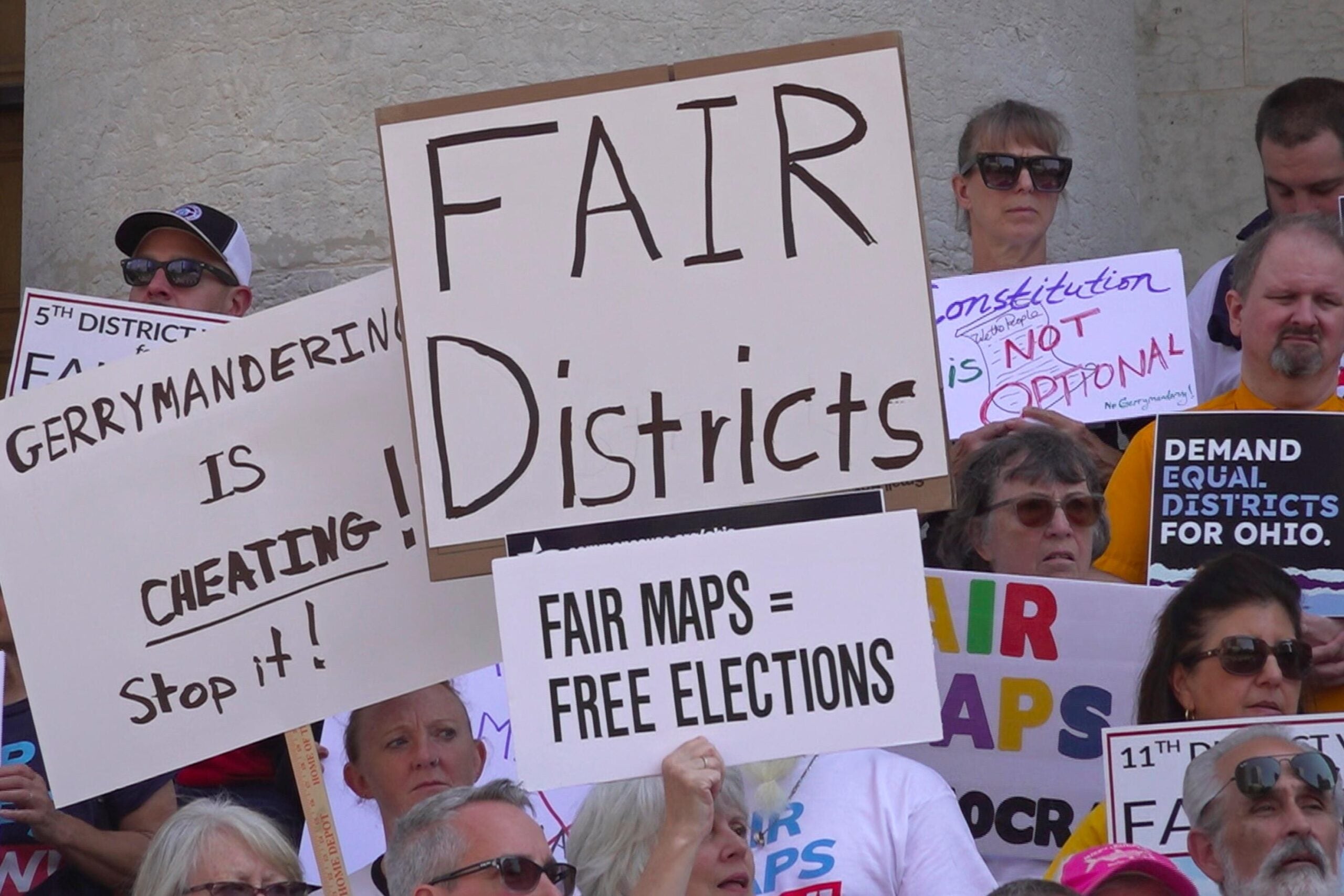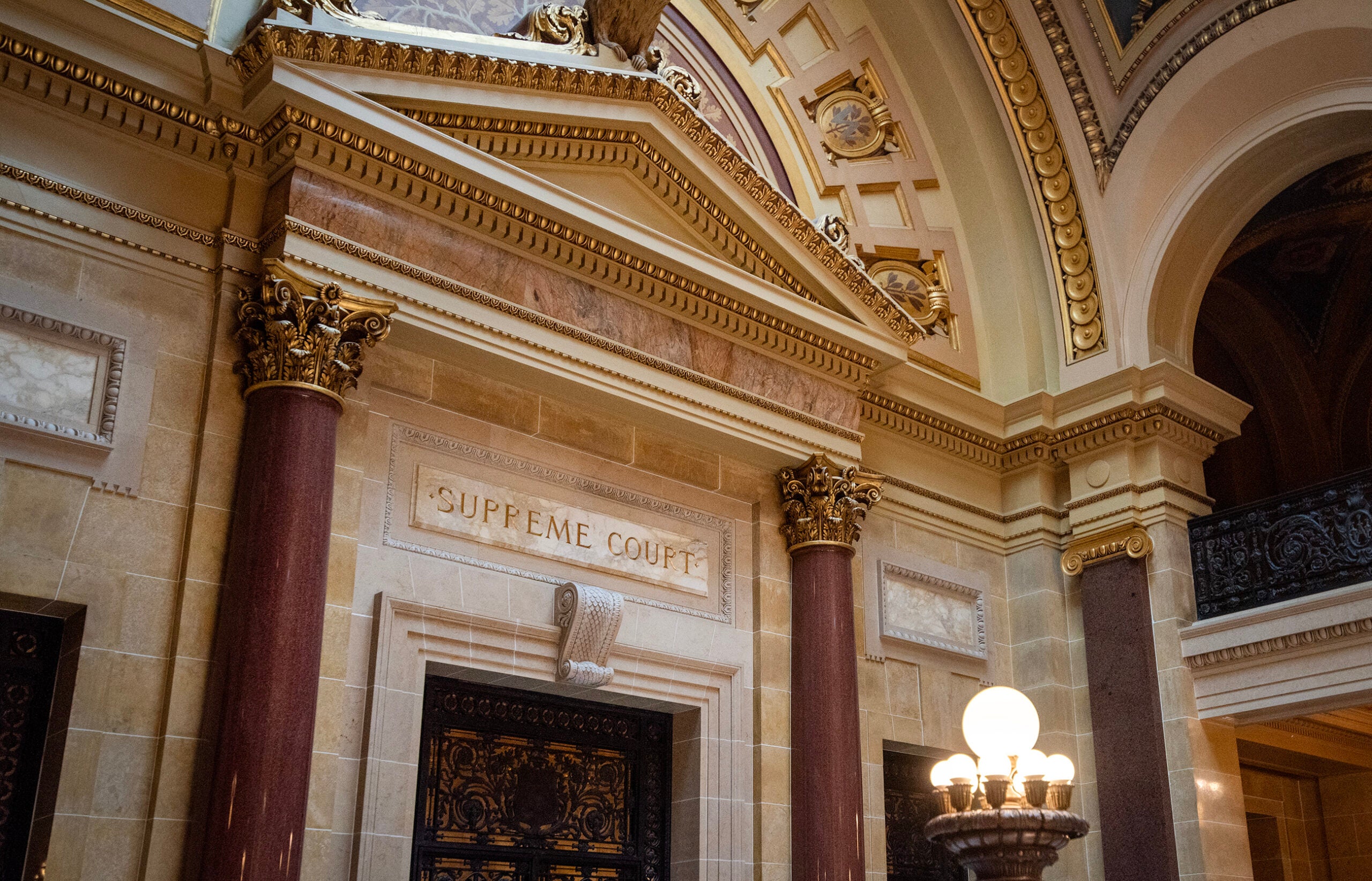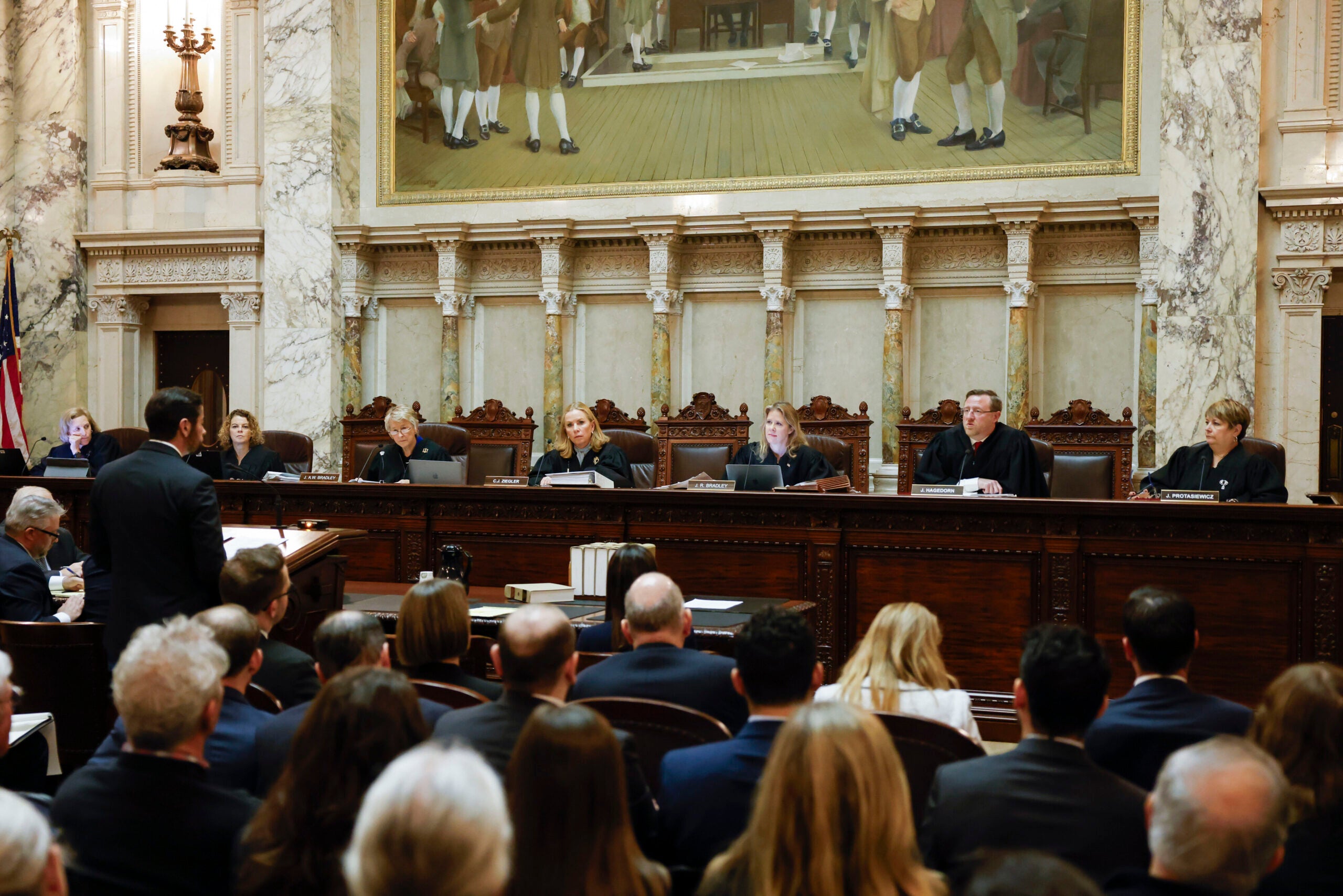The day the new Republican-drawn legislative map passed the Wisconsin Assembly in 2011, Democrat Fred Kessler knew his party was in trouble.
Kessler was a state representative from Milwaukee at the time, but his history with redistricting spanned decades. He had worked on Wisconsin’s maps in 1963, 1971 and 1991. This time around, Kessler was on the outside looking in.
“In all the years I have been working on redistricting, I have never seen anything as egregious and as outrageous as this,” he said in a floor speech that day.
Kessler had run the numbers and was pretty sure that under this map, Republicans would win big majorities in the state Legislature, even in years when Democrats did well statewide.
And even in the rough-and-tumble world of redistricting, Kessler thought this was too much. During his speech, he referenced U.S. Supreme Court cases that had raised the prospect that a partisan gerrymander could be unconstitutional if it went too far. Kessler thought this map had done just that.

Former Democratic state Rep. Fred Kessler in Milwaukee, Wis. Kessler was a driving force behind a legal challenge to Wisconsin’s 2011 political maps that went all the way to the U.S. Supreme Court. Angela Major/WPR
“Your lawyers have told you, ‘Don’t worry, don’t worry, we’ll get this through. Don’t worry. We’ll withstand any court challenge to this,’” Kessler said. “I disagree with you. I think we have a very good chance to overturn this.”
Kessler’s concerns about the map turned out to be well-founded. In 2012, despite strong Democratic turnout statewide, Republicans won 60 out of 99 seats in the state Assembly.
Kessler decided something had to be done. In early 2013, he assembled a group of friends in politics and law.

Map data courtesy of the Legislative Technology Services Bureau / John K. Wilson/WPR
Among the first people invited were Peter Earle, one of the attorneys who challenged the map in a 2012 lawsuit, James Hall, then-president of the NAACP of Milwaukee, Richard Saks, a prominent Milwaukee lawyer, and Sachin Chheda, then-chair of the Democratic Party of Milwaukee County. They started meeting at the Watts Tea Room in downtown Milwaukee.
“We kind of had a corner of ourselves and the loud political people could pontificate,” Chheda recalled. “It was just talking and thinking.”
Bill Whitford, a retired law professor from Madison who had known Kessler since they were in college together in the 1960s, later joined the group.
At first, they were just brainstorming. If Democrats had no shot at winning the Legislature, what could they do?
Chheda said they saw one path forward: They would take a case against this map to the United States Supreme Court.

Sachin Chheda, one of the members of Kessler’s Watts Tea Room group, speaks at a redistricting rally in front of the state Capitol in Madison on Monday, May 17, 2021. Angela Major/WPR
This, to put it lightly, was a long shot idea. The Watts Tea Room group was basically trying to do something that had never been done before. They were trying to convince the court that some partisan gerrymanders are too partisan, and thus, unconstitutional.
This would be big for Wisconsin and also for the whole country. If the lawsuit succeeded, people in any state could challenge partisan gerrymanders in federal court.
But, it was not an original idea. People had tried this for decades and each time they had failed. The Watts Tea Room group knew they’d need to build their case if they wanted a different outcome.
‘I thought that Anthony Kennedy was our savior’
At the time, building a partisan gerrymandering case for the U.S. Supreme Court really meant building a case for one particular justice.
Anthony Kennedy, the last remaining nominee of President Ronald Reagan, was the swing vote on the court, which was split 5-4 between justices nominated by Republican presidents and justices nominated by Democrats.
For the people trying to overturn Wisconsin’s map, Kennedy was their only hope.

Supreme Court Justice Anthony Kennedy at a White House Rose Garden event in Washington, Monday, April 10, 2017. Carolyn Kaster/AP Photo
“I thought that Anthony Kennedy was our savior,” Kessler said.
Kennedy wrote an opinion in 2004 hinting that he would be open to striking down a redistricting plan as a partisan gerrymander, if only someone would come up with a fair way to measure it.
The efficiency gap
As it turns out, other people around the country were looking for the same thing.
The Watts Tea Room group got word of a draft law review article by University of Chicago law professor Nick Stephanopoulos and Eric McGhee, a political scientist at the Public Policy Institute of California. The article proposed a metric called the “efficiency gap” to quantifiably measure just how partisan a given gerrymander was
Stephanopoulos agreed to sign on with the Wisconsin effort. His then-girlfriend, attorney Ruth Greenwood, a redistricting expert, also joined the team.
The efficiency gap compares raw vote totals to actual wins in the legislature by looking at so-called “wasted” votes.
According to the theory, a political party “wastes” votes in two ways: By casting too many of them in races that they were going to win anyway and casting too few in races where they come up just short.
So, for example, when Democratic voters get “packed” into a dense urban district that the party wins in a landslide, they’re wasting a lot of votes. And when a party’s voters are spread out or “cracked” so that they come up just short in other districts, the efficiency gap says those votes are also wasted.
The “gap” refers to the difference in each party’s wasted votes, divided by the total votes. The higher the number, the bigger the gerrymander.
Wisconsin Public Radio, © Copyright 2026, Board of Regents of the University of Wisconsin System and Wisconsin Educational Communications Board.



